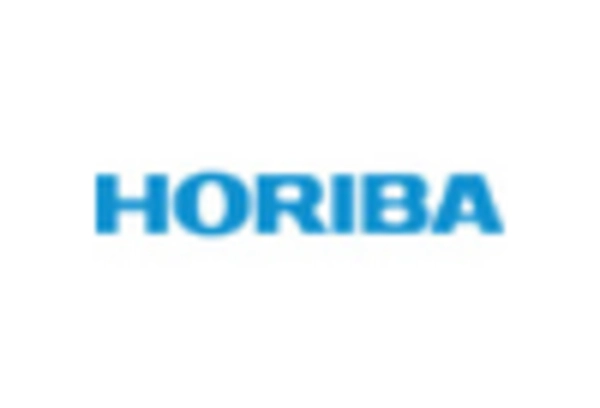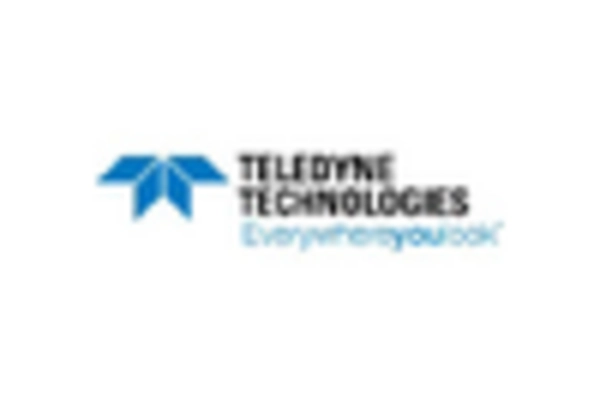Growing Demand in Pharmaceutical Industry
The Laser Induced Breakdown Spectroscopy Market is experiencing a surge in demand from the pharmaceutical sector. This industry requires precise analytical techniques for drug formulation, quality control, and compliance with regulatory standards. The ability of Laser Induced Breakdown Spectroscopy Market to provide rapid and accurate elemental analysis makes it an invaluable tool for pharmaceutical companies. The pharmaceutical market is projected to grow at a CAGR of 4.5% through 2027, which is likely to drive the adoption of advanced analytical technologies. As companies strive to enhance product quality and ensure regulatory compliance, the integration of Laser Induced Breakdown Spectroscopy Market into their processes is expected to increase, thereby expanding its market share.
Expansion in Material Science Applications
The Laser Induced Breakdown Spectroscopy Market is witnessing significant growth due to its expanding applications in material science. Researchers and manufacturers are increasingly utilizing this technology for the characterization of materials, including metals, polymers, and composites. The ability to analyze the elemental composition and structure of materials with high precision is crucial for quality control and product development. The material science sector is projected to grow at a CAGR of 6.5% over the next five years, which is likely to enhance the demand for Laser Induced Breakdown Spectroscopy Market solutions. This technology not only facilitates the identification of material properties but also aids in the development of new materials, thereby driving innovation and competitiveness in the industry.
Rising Adoption in Environmental Monitoring
The Laser Induced Breakdown Spectroscopy Market is experiencing a notable increase in the adoption of its technologies for environmental monitoring applications. This trend is driven by the growing need for accurate and real-time analysis of pollutants and contaminants in air, water, and soil. As regulatory bodies impose stricter environmental standards, industries are compelled to invest in advanced analytical techniques. The market for environmental monitoring is projected to reach USD 1.5 billion by 2026, indicating a robust demand for Laser Induced Breakdown Spectroscopy Market solutions. This technology offers rapid, non-destructive analysis, making it an attractive option for environmental scientists and regulatory agencies alike. Consequently, the integration of Laser Induced Breakdown Spectroscopy Market in environmental monitoring is likely to bolster its market presence and drive further innovations.
Emergence of Automation and Smart Technologies
The Laser Induced Breakdown Spectroscopy Market is poised for growth due to the emergence of automation and smart technologies. The integration of automated systems with Laser Induced Breakdown Spectroscopy Market enhances operational efficiency and reduces human error in analytical processes. Industries are increasingly adopting smart technologies to streamline workflows and improve data accuracy. The automation market is anticipated to grow significantly, with projections indicating a value of USD 300 billion by 2025. This trend suggests that the incorporation of automated Laser Induced Breakdown Spectroscopy Market systems will become more prevalent, leading to increased productivity and cost-effectiveness. As industries seek to optimize their operations, the demand for automated solutions in the Laser Induced Breakdown Spectroscopy Market is likely to rise.
Increased Investment in Research and Development
The Laser Induced Breakdown Spectroscopy Market is benefiting from increased investment in research and development across various sectors. Organizations are recognizing the potential of this technology for advancing scientific research, particularly in fields such as chemistry, physics, and geology. The global investment in R&D is expected to reach USD 2 trillion by 2025, which may lead to enhanced funding for innovative analytical techniques like Laser Induced Breakdown Spectroscopy Market. This influx of capital is likely to accelerate technological advancements, improve the accuracy and efficiency of existing systems, and foster the development of new applications. As a result, the market is poised for growth as more institutions adopt Laser Induced Breakdown Spectroscopy Market for their research needs.


















Leave a Comment